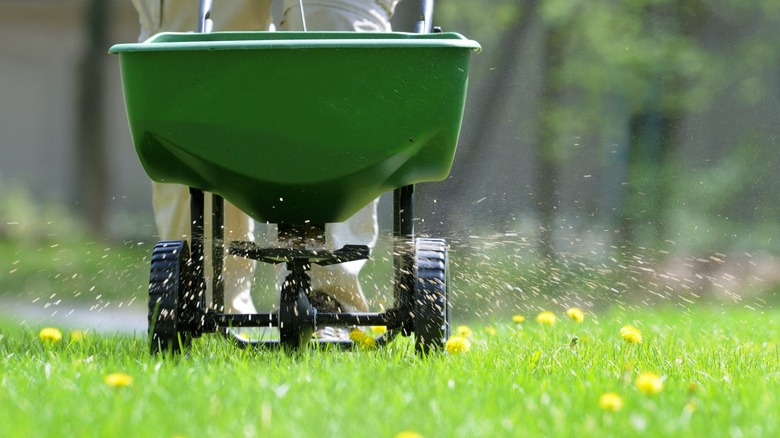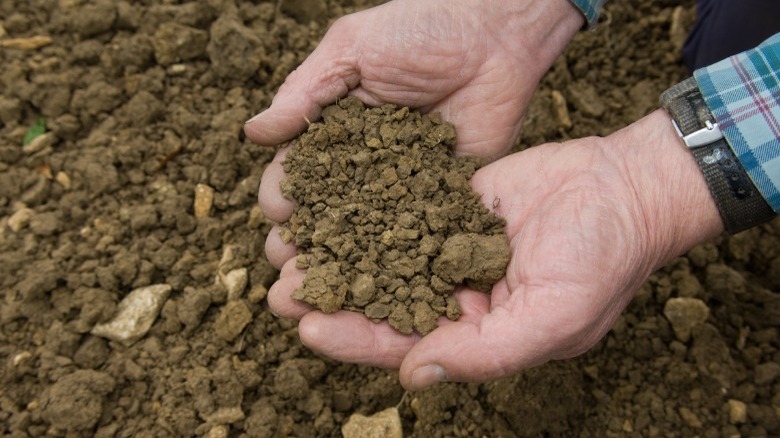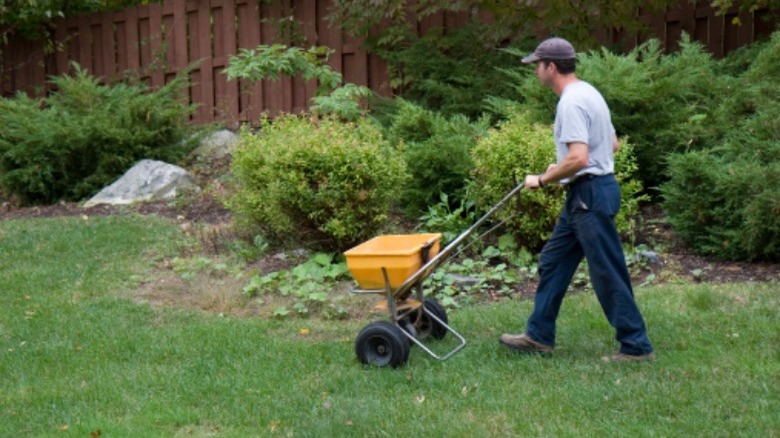How To Use Sulfur Fertilizer For A Healthier Lawn
It's that time of year again when we all love having a beautiful green lawn to show off. Even though you may not have the greenest thumb on the block, you can certainly try having the greenest grass. You may have heard something about using sulfur fertilizer but aren't sure if it's right for your lawn. Fertilizing with sulfur is actually a healthy approach. You should always start by testing the pH of the soil with an inexpensive test. This is a great way to ensure your lawn will receive the right nutrients from the start.
Sulfur fertilizer has some terrific benefits, but if not used correctly, it can burn the grass and roots. Most people use it to help correct soil deficiencies and to encourage healthy roots and strong growth. It is an essential secondary nutrient for your lawn, but it must be applied carefully and in accordance with the results of a soil test. We're going to go over all the details and show you how to use sulfur fertilizer for a healthier lawn.
Benefits of using sulfur fertilizer
The first benefit of using sulfur in your lawn is that it promotes the green in your grass! It aids grasses in producing chlorophyll, as well as other proteins, amino acids, and the all-important nitrogen. It's considered an essential nutrient for a healthy lawn in general, and when your soil lacks enough sulfur, the grass will become faded and yellow. Sulfur is a naturally occurring mineral in the soil, but when there's not enough organic matter being broken down to produce it, it can create a deficiency.
Adding a sulfur fertilizer can help restore any deficiencies so your grass will grow lush and green. After you test your soil's pH level, if it reads above 7.5, you'll need to start adding a sulfur fertilizer to lower it. Ideally, you want the pH level to be between 6.0 and 7.5. The fertilizer will need to be added before you seed the lawn and after a few inches of growth, and it will take some time. Once restored, the grass will be able to absorb the nutrients it needs.
How and when to use sulfur fertilizer
It's important to understand that it's difficult to differentiate between a sulfur or a nitrogen deficiency simply through appearance. This is another cause for testing your soil if you suspect a lack of sulfur. Incidentally, you can get your soil tested locally, and the average cost is $10 to $40.
If the test reveals a deficiency, look for a complete lawn fertilizer and apply it to warm-season grasses in the spring once they turn green. For cool-season grasses, it's best to apply fertilizer in the fall before the first freeze. Typically, lawn fertilizers come in granules that you'll want to spread on a day with no wind and nice weather. Use a walk-behind fertilizer spreader, and be sure to use calm, evenly-paced steps. Following these tips on how to use sulfur fertilizer for a healthier lawn will give you the best chance of having the greenest grass in the whole neighborhood!


